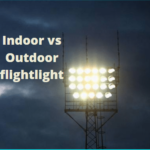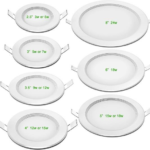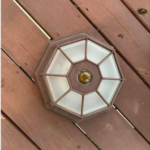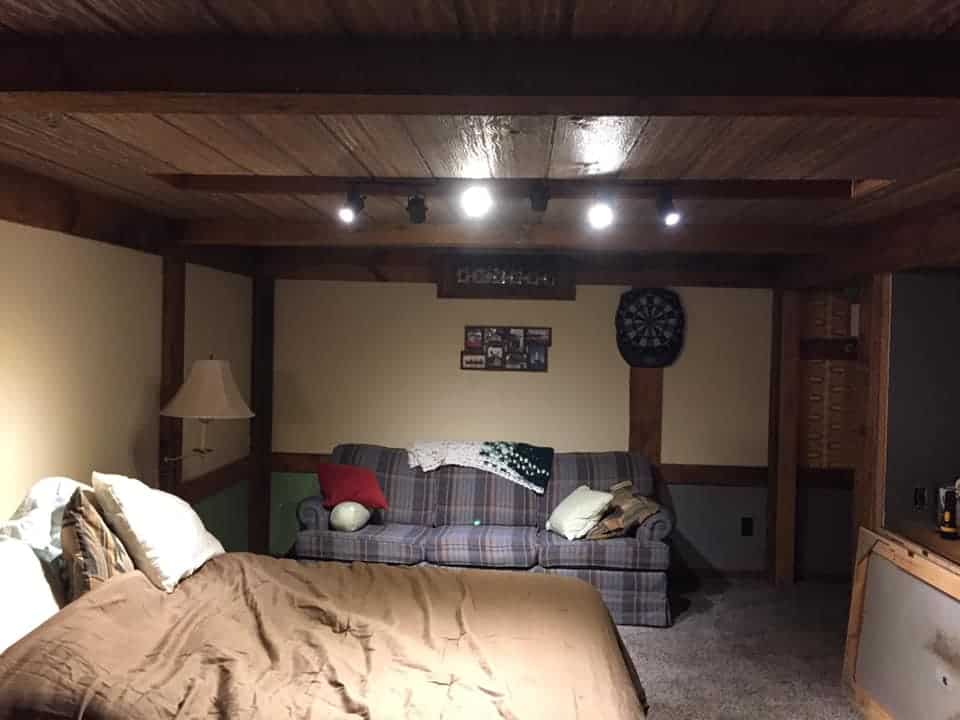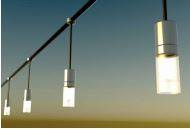
Getting the right wattage bulb for the light fixture is vital not only for perfect illumination but also to ensure maximum safety. Generally, the recommended wattage bulb for ceiling light is from 60 to 100-watt bulbs. But if the situation requires the light to stay on for a long time, using a lower wattage of 60 or 75 watts might be a better option.
Each ceiling light has a maximum wattage limit. You will probably find it in the light bulb socket. but to understand what is the ideal wattage for a particular room we use a formula. 1.5 x length of the room x width of the room = The total wattage needs for that room.
Table of Contents
Explanation
The right wattage for ceiling lights also depends on some other factors. One is the type of bulb. Some bulbs use high wattage while others don’t but emit brighter lights. For instance, a LED light of 9 watts emits 800 lumens while an incandescent bulb of 60 watts emits the same 800 lumens. If you want very bright illumination, you’ll probably go for higher lumens since it represents brightness. Wattage determines the power consumption and no longer brightness given the improvement in technology.
Secondly, the light fixtures also determine the level of wattage to use. Some of the fixtures in the market usually specify the number of wattages they can carry to avoid damages. So, you’ll pick the bulb suitable for the fixture in such a case. This is because the heat dissipated from the bulb matters as it might destroy the fixture and probably cause a fire. Such issues often arise when using an enclosed fixture because this type facilitates overheating. But if you’re using a LED bulb, you don’t have to worry because they can be used with any fixture, not minding the wattage specifications.
Some other factors include the reflectors at the back of the lights and the color of the walls.
What Wattage is best for Indoor Ceiling Light?
Considering the high level of daylight in most standard rooms, getting a light bulb with lower wattage is preferable here. As a result, a 60-watt light bulb will do great for indoor ceiling light. You can consider this the best option for a room with clear natural light.
However, for a room with few or no windows, you can step up the number to 75 watts. Furthermore, it is vital to know that you cannot describe the brightness of a bulb by its watts. You also need to know the level of its lumens or foot candles.
Use the table below to guide your choice making:
| Bulb Type | 1250-2000 Lumen | 1000-1250 Lumen | 700-1000 Lumen | 500-700 Lumen | 300-500 Lumen | 200-300 Lumen |
| LED | 13-20 Watt | 10-13 Watt | 8-10 Watt | 5-7 Watt | 3-5 Watt | 2-4 Watt |
| CFL | 20-33 Watt | 20 Watt | 15 Watt | 11 Watt | 8 Watt | 5-6 Watt |
| Halogen | 125 Watt | 100 Watt | 65 Watt | 50 Watt | 35 Watt | 18-25 Watt |
| Incandescent | 150-250 Watt | 120 Watt | 75 Watt | 60 Watt | 40 Watt | 25-30 Watt |
· Living room
The best wattage for a living room depends on how large the room is. Also, if you’re after brightness, gauge the light in terms of lumens and not wattage, especially for LED bulbs. But you must first get the measurement of the room to determine the total wattage you need. For instance, a square foot of your living room requires at least 20 lumens. So, you must calculate the total square feet to know the total lumen you need for the living room. For instance. If you have a 10 by 12ft. room, you will multiply it by 20 lumens per sq. foot to know the total lumens.
· Bathroom
For bathroom lighting, the least wattage may begin from 60 watts for incandescent bulbs but 13 to 15 watts for LED bulbs. If you have a large bathroom, then you might want to take this a step or two further. Meaning you will be looking at getting a 75-watt range equivalent bulb. However, the type of bulb will determine the wattage to use. For LED bulbs, you will need 18 to 25Watts.
· Kitchen
Your kitchen needs to be well lit. This is because oftentimes, you work with certain cooking tools/materials such as knives. As such, you might need an Incandescent light bulb of 100 watts but 23 to 30w LED bulbs. This is particular for a naturally dark kitchen with more opaque fixtures. On the other hand, a slightly dimmer light bulb of 80 watts will do great in a kitchen with much natural light.
· Hallway
Using overhead light in a hall maintains a well-lit hallway. This is because, usually, hallways receive little natural light. To this effect, three 50 watts light bulbs in a hallway with multiple fixtures will be okay. In a case of a fixture housing a single bulb, an 80 to 100-watt light bulb is also perfect. But if you’re using a LED bulb, the wattage can be between 23W to 30W because the lumens will determine the brightness.
What Wattage is best for Outdoor Ceiling?
Normally the outdoors are characterized by adequate illumination from natural light. So, when considering the wattage for the outdoor ceiling, we recommend going for lower wattage from 40 watts to 80 watts for incandescent bulbs. But for LED lights, 13W to 15W
Frequently Asked Questions (FAQs)
What kind of light bulb goes in a ceiling?
Different types of bulbs go into the ceiling. There are the CFL bulbs (Compact Fluorescent Light), LED bulbs, Incandescent bulbs, and Halogen bulbs. The CFL bulbs are suitable for the task and ambient lighting. They are also energy-efficient and don’t cost a lot. The LED bulbs are the most energy-efficient of all bulbs and usually stay cool no matter how long they shine. But they cost more and are suitable as task lights. Moreover, they last long too. Halogen bulbs are also great in energy efficiency, durability, and affordability, but incandescent bulbs are not as energy-efficient as the rest.
Can you put any watt bulb in the ceiling light?
It is not safe to install any watt bulb in the ceiling light. You must consider certain factors, such as the type of bulb and the capacity of the fixture. For example, if the bulb is LED, you can fix it in any fixture, but you must check the fixture-specific wattage requirement if it’s an incandescent bulb.
Does it matter what watt light bulb you use?
If you seek brighter light, then the watts of the light bulb will not matter. But, you’ll focus on lumens and not watts. Watts comes into play when referring to the energy required by a particular light bulb. Also, the fixture you’re using makes it important to pay attention to the wattage of the bulb. For instance, if the bulb is not LED and is used in an enclosed light fixture, the incident of overheating might occur.
What is the normal wattage to room light?
The normal wattage to room light for a room that has decent natural light is about 60 watts? If the room is void of natural light, you can consider getting a compliment to this, like ambient overhead light. Otherwise, simply step up the number with a 75-watt light bulb.



